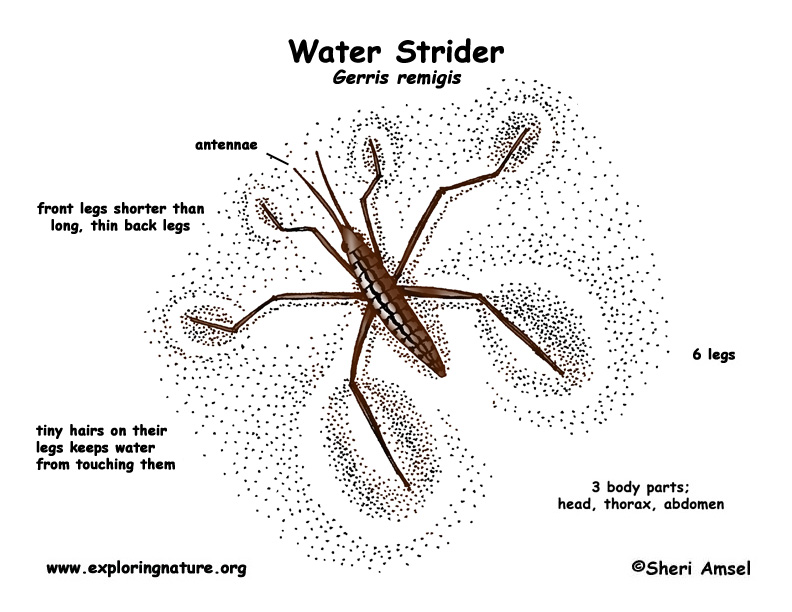

There are many different species and they are found all over North America.
They live on ponds and the calm edges of streams.
They have a thin, flat, body with long, thin legs. The back legs are much longer than the front legs. Tiny hairs on their legs keep water from reaching them and helps make the “water tension” that holds them up. They have no wings if they become adults in the summer. If they come out in the fall, they may have wings.
They “skate” on water's surface using the water tension to hold them up.
They eat insects that land on the water. Both young phase and adult form have a “beak” that they stab prey with and suck out their juices.
Females lay eggs under water or on things that float by on the water. Young hatch out and live under water for a phase (larvae or nymph). They also eat insects.
Kingdom: Animalia
Phylum: Arthropoda
Class: Insecta
Order: Hemiptera
Suborder: Heteroptera
Infraorder: Gerromorpha
Family: Gerridae
Genus: Gerris
Species: G. remigis
When you research information you must cite the reference. Citing for websites is different from citing from books, magazines and periodicals. The style of citing shown here is from the MLA Style Citations (Modern Language Association).
When citing a WEBSITE the general format is as follows.
Author Last Name, First Name(s). "Title: Subtitle of Part of Web Page, if appropriate." Title: Subtitle: Section of Page if appropriate. Sponsoring/Publishing Agency, If Given. Additional significant descriptive information. Date of Electronic Publication or other Date, such as Last Updated. Day Month Year of access < URL >.
Amsel, Sheri. "Water Strider" Exploring Nature Educational Resource ©2005-2024. December 13, 2024
< http://www.exploringnature.org/db/view/297 >

